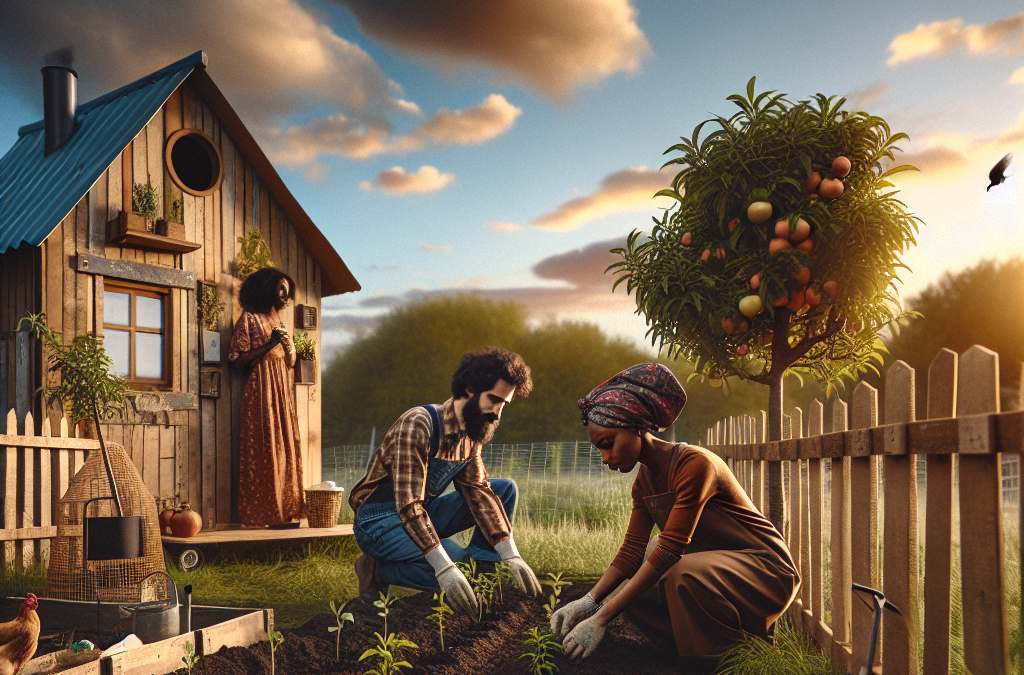Planning Your Space Wisely
Understanding Your Land
When I first started my homesteading journey, I’m not gonna lie—it felt a bit overwhelming. The first step was digging into what I had available. It’s crucial to know the dimensions of your property and what resources you can work with. For instance, sun exposure and water sources played a big role in what I could plant.
Take the time to walk your land throughout the day. Notice where the sunlight hits the ground at different times, and keep an eye on any wet areas that might be great for water-loving plants. I learned early on that understanding the natural layout of my space saved me loads of headaches down the road.
Finally, sketch out a simple map of your property. It doesn’t need to be fancy, just a rough outline will help you visualize different planting zones, animal pens, and structures you want to build. This will be your roadmap, guiding you through all the exciting (and sometimes daunting) steps ahead.
Starting Small with Your Garden
Choosing the Right Crops
My garden journey didn’t kick off with a grand plan; I started small. Choosing the right crops is key when you’re tight on budget. I recommend starting with what you love to eat. For me, that meant tomatoes and herbs, which are not only delicious but can be really forgiving for beginners.
Research which crops grow well in your climate; local gardening groups can be a goldmine for info. You can also share seeds with friends or join seed swapping networks. It’s a fantastic way to sample a variety without breaking the bank!
As you get the hang of it, you can expand your selection based on success rates and what you enjoy growing. Remember, it’s all about experimenting without the pressure of perfection, so don’t sweat the small stuff!
Building Your Own Structures
Starting with DIY Projects
Listen, I get it; handy is not everyone’s middle name, and that’s okay! But trust me, building your own structures like chicken coops or garden beds can save you a ton of cash. I started by scouring online videos showing simple designs. You’d be amazed at what you can do with some basic materials and a little creativity.
Make a trip to your local hardware store; just wandering around can spark ideas, and ask staff for leftover or discounted materials. You can even look into reclaimed materials from websites or local groups. I’ve built a couple things just from pallets and scrap wood—every penny counts!
Start with the essentials—don’t feel the need to build a five-star mansion for your chickens right out of the gate. Simple, sturdy, and functional is the name of the game here. Over time, as you gain confidence, you can add more flair to your projects!
Fostering Livestock on a Budget
Choosing Suitable Animals
Bringing animals into your homestead can be one of the most rewarding parts of the process! When I started, I thought a full menagerie was the way to go. But, I learned that it’s better to start small. Chickens are a fantastic first step; they’re pretty low-maintenance and provide fresh eggs.
As you get comfortable with care and feeding, you might consider adding other animals. Goats are amazing for both milk and weed control, and they’re surprisingly easy to care for. Just make sure you research the right breeds that suit your space and lifestyle!
Building relationships with local farmers or homesteaders can also help you secure animals at a lower cost. Many folks are happy to share or trade, which really can cut down on your initial investment.
Utilizing Community Resources
Networking with Neighbors
One of my favorite aspects of starting a homestead is the sense of community it fosters. Don’t underestimate the power of your neighborhood! Chances are, there are others around you who are into gardening or even homesteading. Networking with them can open so many doors!
Join local online groups or community boards where you can share tips, tools, or even excess produce. It’s often beneficial—someone might have extra seedlings or tools collecting dust in their garage. I’ve scored much-needed supplies this way!
Also, consider local workshops on homesteading skills—things like canning, composting, or building raised beds. Not only will you learn something new, but you’ll meet others on the same path, forming friendships that can easily turn into partnerships as you grow.
FAQ
1. How do I start a garden on a budget?
Start small by growing crops that you love and know will thrive in your area. Consider seed swapping and utilizing kitchen scraps for regrowing herbs. Use recycled materials for planters and garden beds.
2. What animals are the best for beginner homesteaders?
Chickens are excellent for beginners due to their low maintenance. They provide fresh eggs and can help with pest control. As you gain confidence, consider adding goats or rabbits.
3. Can I build my own structures even if I’m not handy?
Absolutely! Start with simple designs and use online resources for guidance. You don’t need to be a pro—watching how-tos and starting with basic builds can kickstart your DIY journey.
4. How important is community support when starting a homestead?
Community support is crucial! Connecting with local homesteaders can provide you with resources, advice, and even trade opportunities. It creates a network that enriches your experience.
5. What’s the best way to manage costs while homesteading?
Prioritize essential projects and avoid impulse buys. Using recycled materials, planting from seed, and starting small with livestock can help manage costs effectively. It’s all about strategic planning!





